Unintended Effects of Energy Efficiency Policy: Lessons Learned in the Residential Sector
Abstract
:1. Introduction
2. Methodology
2.1. Model Structure
2.1.1. Underpinning Theory of the Model
2.1.2. Previously Developed System Dynamics Model
2.1.3. Supplementary Sub-Model
- A group model building session for experts was carried out.
- A survey was developed and carried out to establish motivations, attitudes and values, contextual or situational factors, social influences, personal capabilities, and habits that can describe and predict energy-efficient behavior.
- A stock and flow structure was built.
Group Model Building Session
Survey
System Dynamics Model
2.2. Validation of the Model
2.3. Policy Interventions
2.4. Interface for Policy Makers
3. Results
3.1. Model-Based Policy Analysis 2008–2020
3.1.1. Funding Discontinuity
3.1.2. Energy Service Companies
3.1.3. Delays and Construction Quality
3.1.4. Social Context, Social Interactions, and Social Behavior
3.1.5. Information Dissemination
3.2. Future Scenarios
- Scenario 1, or baseline scenario, is based on the current ongoing policy in Latvia according to the National Energy and Climate Plan 2030. In 2022, the total available EU funding is 200 million EUR (140 million EUR from the EU Multiannual finance framework and 140 million EUR from the EU Resilience Fund). The support intensity for multi-apartment buildings is 30%. The information is provided by the grassroots information activities via the campaign Let’s live warmer. In addition to that, energy efficiency obligation scheme is used for electricity providers with an annual savings goal of 1.50%.
- Scenario 2 has the same set of policy tools as Scenario 1, but funding is increased three times and is 600 million EUR.
- Scenario 3 has the same amount of EU funding as Scenario 1 and the same support intensity and is combined with other policy tools provided by the interface.
- Scenario 4 has the same amount of EU funding as Scenario 2 and the same support intensity and is combined with other policy tools provided by the interface.
- Scenario 5 has the same set of policy tools as Scenario 4, but funding is increased to 1000 million EUR.
4. Discussions
5. Conclusions
Author Contributions
Funding
Institutional Review Board Statement
Informed Consent Statement
Data Availability Statement
Acknowledgments
Conflicts of Interest
References
- European Commission. The European Green Deal; Communication from the Commission to the European Parliament; The European Council; The Council, The European Economic and Social Committee and the Committee of the Regions: Brussels, Belgium, 2019; 640p. [Google Scholar]
- Eurostat. Energy Consumption and Use by Households. 2019. Available online: https://ec.europa.eu/eurostat/web/products-eurostat-news/-/DDN-20190620-1 (accessed on 8 May 2021).
- Cattaneo, C. Internal and external barriers to energy efficiency: Which role for policy interventions? Energy Effic. 2019, 12, 1293–1311. [Google Scholar] [CrossRef] [Green Version]
- European Commission. Revision of the Energy Performance of Buildings Directive 2010/31/EU, Inception Impact Assessment; Ref.Ares 1397833; European Comission: Brussels, Belgium, 2021. [Google Scholar]
- Labanca, N.; Bertoldi, P. Beyond energy efficiency and individual behaviours—Policy insights from social practice theories. Energy Policy 2018, 115, 494–502. [Google Scholar] [CrossRef]
- Gardner, G.T.; Stern, P.C. Environmental Problems and Human Behavior; Pearson Custom Publishing: Boston, MA, USA, 2002. [Google Scholar]
- Wiese, C.; Larsen, A.; Pade, L.-L. Energy Efficiency Policy: A Review of Instruments and Potential Interaction Effects. In Proceedings of the 40th Annual IAEE International Conference, Singapore, 18–21 June 2017. [Google Scholar]
- Casado, F.; Hidalgo Carmen, M.; Garcia-Leiva, P. Energy efficiency in households—The effectiveness of different types of messages in advertising campaigns. J. Environ. Psychol. 2017, 53, 198–205. [Google Scholar] [CrossRef]
- Ebrahimigharehbaghi, S.; Qian, K.Q.; Meijer, M.F.; Visscher, J.H. Unravelling Dutch homeowners’ behaviour towards energy efficiency renovations—What drives and hinders their decision-making. Energy Policy 2019, 129, 546–561. [Google Scholar] [CrossRef]
- Wilson, C.; Crane, L.; Chryssochoidis, G. Why do homeowners renovate energy efficiently? Contrasting perspectives and implications for policy. Energy Res. Soc. Sci. 2015, 7, 12–22. [Google Scholar] [CrossRef] [Green Version]
- Caird, S.; Roy, R.; Herring, H. Improving the energy performance of UK households: Results from surveys of consumer adoption and use of low- and zero carbon technologies. Energy Effic. 2008, 1, 149–166. [Google Scholar] [CrossRef]
- Ramos, A.; Labandeira, X.; Löschel, A. Pro-environmental households and energy efficiency in Spain. Environ. Resour. Econ. 2015, 63, 367–393. [Google Scholar] [CrossRef]
- Trotta, G. The determinants of energy efficient retrofit investments in the English residential sector. Energy Policy 2018, 120, 175–182. [Google Scholar] [CrossRef]
- Heinzle, S.L. Disclosure of energy operating cost information: A silver bullet for overcoming the energy-efficiency gap? J. Consum. Policy 2012, 35, 43–64. [Google Scholar] [CrossRef]
- Camilleri, A.R.; Larrick, R.P. Metric and scale design as choice architecture tools. J. Public Policy Mark. 2014, 33, 108–125. [Google Scholar] [CrossRef]
- Ungemach, C.; Camilleri, A.R.; Johnson, E.J.; Larrick, R.P.; Weber, E.U. Translated attributes as choice architecture: Aligning objectives and choices through decision signposts. Manag. Sci. 2017, 64, 1975–2471. [Google Scholar] [CrossRef] [Green Version]
- Tsagarakis, P.; Karyotakis, K.; Zografakis, N. Implementation conditions for energy saving technologies and practices in office buildings—Part 2. Double glazing windows, heating and air-conditioning. Renew. Sustain. Energy Rev. 2012, 16, 3986–3998. [Google Scholar] [CrossRef]
- Girod, B.; Stucki, T.; Woerter, M. How do policies for efficient energy use in the household sector induce energy-efficiency innovation. An evaluation of European countries. Energy Policy 2017, 103, 223–237. [Google Scholar] [CrossRef]
- Kivimaa, P.; Kern, F. Creative destruction or mere niche support. Innovation policy mixes for sustainability transitions. Res. Policy 2016, 45, 205–217. [Google Scholar] [CrossRef] [Green Version]
- Fresner, J.; Morea, F.; Krenn, C.; Uson, J.A.; Tomasi, F. Energy efficiency in small and medium enterprises—Lessons learned from 280 energy audits across Europe. J. Clean. Prod. 2017, 142, 1650–1660. [Google Scholar] [CrossRef]
- Rosenow, J.; Kern, F.; Rogge, K. The need for comprehensive and well targeted instrument mixes to stimulate energy transitions—The case of energy efficiency policy. Energy Res. Soc. Sci. 2017, 33, 95–104. [Google Scholar] [CrossRef]
- Kamal, A.; Al-Ghamdi, S.G.; Koc, M. Revaluing the costs and benefits of energy efficiency—A systematic review. Energy Res. Soc. Sci. 2019, 45, 68–84. [Google Scholar] [CrossRef]
- Blumberga, A.; Žogla, G.; Laicāne, I. Planning and Evaluation Tools for Energy Efficiency Policy in the Housing Sector in Latvia. In Proceedings of the International Energy Program Evaluation Conference, Rome, Italy, 12–14 June 2012. [Google Scholar]
- Pikasa, E.; Kurnitski, J.; Liias, R.; Thalfeldt, M. Quantification of economic benefits of renovation of apartment buildings as a basis for cost optimal 2030 energy efficiency strategies. Energy Build. 2015, 86, 151–160. [Google Scholar] [CrossRef]
- Kern, F.; Kivimaa, P.; Martiskainen, M. Policy packaging or policy patching. The development of complex energy efficiency policy mixes. Energy Res. Soc. Sci. 2017, 23, 11–25. [Google Scholar] [CrossRef] [Green Version]
- Cunningham, P.; Edler, J.; Flanagan, K.; Laredo, P. Innovation Policy Mix and Instrument Interaction: A Review. Available online: https://media.nesta.org.uk/documents/innovation_policy_mix_and_instrument_interaction.pdf (accessed on 30 August 2021).
- Rosenow, J.; Fawcett, T.; Eyre, N.; Oikonomou, V. Energy Saving Policies and Energy Efficiency Obligation Schemes. D5.1 Combining of Energy Efficiency Obligations and Alternative Policies. Available online: https://enspol.eu/sites/default/files/results/D5.1Combining%20of%20Energy%20Efficiency%20Obligations%20and%20alternative%20policies.pdf (accessed on 30 August 2021).
- European Commission. A Renovation Wave for Europe—Greening Our Buildings, Creating Jobs, Improving Lives; Communication from the Commission to the European Parliament; The European Council; The Council, The European Economic and Social Committee and The Committee Of The Regions: Brussels, Belgium, 2019; 662p. [Google Scholar]
- Geels, F.W. Technological transitions as evolutionary reconfiguration processes: A multi-level perspective and a case-study. Res. Policy 2002, 31, 1257–1274. [Google Scholar] [CrossRef] [Green Version]
- Ripple, W.J.; Wolf, C.; Newsome, T.M.; Galetti, M.; Alamgir, M.; Crist, E.; Mahmoud, M.I.; Laurance, W.F. World Scientists’ Warning to Humanity: A Second Notice. BioScience 2017, 67, 1026–1028. [Google Scholar] [CrossRef]
- Forrester, J.W. Counterintuitive behavior of social systems. Technol. Forecast. Soc. Chang. 1971, 3, 1–22. [Google Scholar] [CrossRef]
- Moxnes, E. Misperceptions of basic dynamics: The case of renewable resource management. Syst. Dyn. Rev. 2004, 20, 139–162. [Google Scholar] [CrossRef]
- Rahmandad, H.; Sterman, J.D. Heterogeneity and Network Structure in the Dynamics of Diffusion: Comparing Agent-Based and Differential Equation Models. Manag. Sci. 2008, 54, 998–1014. [Google Scholar] [CrossRef] [Green Version]
- Arthur, W.B. Positive Feedbacks in the Economy. Sci. Am. 1990, 262, 92–99. [Google Scholar] [CrossRef]
- Sterman, J. Business Dynamics: Systems Thinking and Modeling for a Complex World; McGraw-Hill: New York, NY, USA, 2000. [Google Scholar]
- Foxon, T.J.; Hammond, G.P.; Pearson, P.J.G. Developing transition pathways for a low carbon electricity system in the UK. Technol. Forecast. Soc. Chang. 2010, 77, 1203–1213. [Google Scholar] [CrossRef] [Green Version]
- Rotmans, J.; Loorbach, D. Complexity and transition management. J. Ind. Ecol. 2009, 13, 184–196. [Google Scholar] [CrossRef] [Green Version]
- De Gooyert, V.; Rouwette, E.; van Kranenburg, H.; Freeman, E.; van Breen, H. Sustainability transition dynamics; Towards overcoming policy resistance. Technol. Forecast. Soc. Chang. 2016, 111, 135–145. [Google Scholar] [CrossRef] [Green Version]
- Cabinet of Ministers of Latvia. Ministru Kabineta Rīkojums Nr.266, Par Latvijas Republikas Pirmo Energoefektivitātes Rīcības Plānu 2008–2010.Gadam. (Latvia First Energy Efficiency Action Plan 2008–2010) 20 May 2008; Cabinet of Ministers of Latvia: Riga, Latvia, 2008. [Google Scholar]
- Cabinet of Ministers of Latvia. Ministru Kabineta Rīkojums Nr.460. Par Latvijas Republikas Otro Energoefektivitātes Rīcības Plānu 2011–2013.Gadam. (Latvia Second Energy Efficiency Action Plan 2011–2013) 16 September 2011; Cabinet of Ministers of Latvia: Riga, Latvia, 2011. [Google Scholar]
- Cabinet of Ministers of Latvia. Ministru Kabineta Rīkojums Nr. 257. Par Energoefektivitātes Politikas Alternatīvo Pasākumu Plānu Enerģijas Galapatēriņa Ietaupījuma Mērķa 2014–2020. Gadam Sasniegšanai. (On the Energy Efficiency Policy Alternative Action Plan to Achieve the 2014–2020 Energy End-Use Savings Target) 24 May 2017; Cabinet of Ministers of Latvia: Riga, Latvia, 2017. [Google Scholar]
- Ministry of Economics of Latvia. Renovēto ēku Statistika. (Statistics of Renovated Buildings). 2021. Available online: https://www.em.gov.lv/lv/renoveto-eku-statistika (accessed on 30 August 2021).
- Forrester, J.; Senge, P. Tests for building confidence in system dynamics models. TIMS Stud. Manag. Sci. 1980, 14, 209–228. [Google Scholar]
- Blumberga, A.; Zogla, G.; Moxnes, E.; Davidsen, P. Residential Energy Efficiency Policy in Latvia: A System Dynamics Approach. In Proceedings of the 29th International Conference of the System Dynamics Society, Washington, DC, USA, 24–28 July 2011; pp. 373–396. [Google Scholar]
- Blumberga, A.; Blumberga, D.; Bažbauers, G.; Žogla, G.; Laicāne, I. Sustainable Development Modelling for the Energy Sector. J. Clean. Prod. 2014, 63, 134–142. [Google Scholar] [CrossRef]
- Cabinet of Ministers of Latvia. Reģionālās Attīstības Uzraudzības un Novērtēšanas Kārtība. (Regulation on Regional Development Assessment and Monitoring) 1 July 2014; Ministru Kabineta Noteikumu Nr. 367; Cabinet of Ministers of Latvia: Riga, Latvia, 2014. [Google Scholar]
- Stern, P.C.; Oskamp, S. Handbook of Environmental Psychology; Wiley: New York, NY, USA, 1987. [Google Scholar]
- Lewin, K. Field theory and experiment in social psychology: Concepts and methods. Am. J. Sociol. 1939, 44, 868–896. [Google Scholar] [CrossRef]
- Vennix, J.A.M. Group Model Building: Facilitating Team Learning Using System Dynamics; John Wiley & Sons: Hoboken, NJ, USA, 1996. [Google Scholar]
- Andersen, D.F.; Richardson, G.P.; Vennix, J.A.M. Group model building: Adding more science to the craft. Syst. Dyn. Rev. 1997, 13, 187–201. [Google Scholar] [CrossRef] [Green Version]
- Barlas, Y. Formal aspects of model validity and validation in system dynamics. Syst. Dyn. Rev. 1996, 12, 183–210. [Google Scholar] [CrossRef]
- Rimma, A. Namu Pārvaldnieka un Ekspertu Sadarbība Energoefektivitātes Projektos. Problēmas un Ieteikumi. (Cooperation of Building Manager and Experts in Energy Efficiency Project. Problems and Suggestions) Diskusija Energoefektivitātes Projekti un to Kvalitātes Uzlabošanas Iespējas. Rīga. 20 March 2017. Available online: https://www.youtube.com/watch?v=l9-WmijAueU&list=PLKEejtELkPcs89J9Z28SQjA50wf6LC-9k (accessed on 30 August 2021).
- Kazlauskaite, A. Financial Instruments for Energy Efficiency in the Programming Period 2014–2020. 2019. Available online: https://www.fi-compass.eu/sites/default/files/publications/presentation_20161020_vienne_agne_kazlauskaite_1.pdf (accessed on 10 August 2021).
- Levionoka, O. SIA “RenESCO” Rezultāti un Pieredze no Esošajiem Projektiem Latvijā (RenESCO Results and Experience from Renovation Projects in Latvia). 2020. Available online: https://50001seaps.eu/fileadmin/user_upload/3_RENESCO_Pieredze_rezultati_eku_renovacija.pdf (accessed on 10 August 2021).
- Ministry of Economics of Latvia. Energoservisa Pakalpojumu Uzņēmumu Finanšu Pieejamības Ex-ante Izvērtējums. (Ex-ante Evaluation of Financial Availability of Energy Service Companies). 2017. Available online: https://www.fi-compass.eu/content/ex-ante-assessment-summary-latvia-financial-accessibility-energy-efficiency-improvement (accessed on 10 August 2021).
- Valantis, E. Pasākumi Būvniecības Kvalitātes Celšanai, t.sk. Būvspeciālistu un Setificējošās Iestādes Atbildība. (Measures to Improve the Quality of Construction, Incl. the Responsibility of the Construction Specialist and the Certifying Authority). 27 March 2017. Available online: https://www.youtube.com/watch?v=ae5jPrHQPHM&list=PLKEejtELkPcs89J9Z28SQjA50wf6LC-9k&index=6&t=0s (accessed on 5 August 2021).
- Liepkalns, V. Energoefektivitātes Rādītājs—Svarīgs Kritērijs ēku Atjaunošanas Projektos (Energy Efficiency Indicator—Important Criteria in Renovation Projects, Workshop) Energoefektivitātes Garantija—Viens no Risinājumiem Kvalitatīvai ēku Atjaunošanai, 29 September 2020, Riga. Available online: https://sharex.lv/wp-content/uploads/VLiepkalns_LVIF.pdf (accessed on 8 May 2021).
- Kukuts, O. Daudzdzīvokļu Dzīvojamo Māju Energoefektivitātes Paaugstināšana—Dzīvokļu Īpašnieku Ilgtspējīgs Lēmums. (Improving the Energy Efficiency of Apartment Buildings—A Sustainable Decision for Apartment Owners) Workshop “Energoefektivitāte Ilgtspējīgai Nākotnei”. 5 July 2019. Available online: https://www.slideshare.net/siltinam/ku-energoefektivitte-133417947 (accessed on 10 August 2021).
- Pētersone, K. Pirmais Jaunās Energoefektivitātes Programmas Objekts—Nu Visas Ciema Daudzdzīvokļu Ēkas Nosiltinātas (The First Object of the New Energy Efficiency Program Is Now All the Apartment Buildings in the Village have been Renovated). 2017. Available online: http://www.zalabriviba.lv/jaunumi/pirmais-jaunas-energoefektivitates-programmas-objekts-nu-visas-ciema-daudzdzivoklu-ekas-nosiltinatas/ (accessed on 11 August 2021).
- Helmane, I. Daudzdzīvokļu Māju Siltināšanas Pieredze. (Experience of Multi-Family Building Renovation Projects). 2018. Available online: https://lvportals.lv/norises/292875-daudzdzivoklu-maju-siltinasanas-pieredze-2018 (accessed on 13 August 2021).
- Steg, L.; Perlaviciute, G.; van der Werff, E. Understanding the human dimensions of a sustainable energy transition. Front. Psychol. 2015, 6, 805. [Google Scholar] [CrossRef] [PubMed] [Green Version]
- Ministry of Economics of Latvia. Information about Communication Campaign. 2020. Available online: https://www.slideshare.net/siltinam/dzvo-siltk-10 (accessed on 5 August 2021).
- Popper, K. The Open Society and Its Enemies; Routledge: Oxfordshire, UK, 1945. [Google Scholar]
- Rosenow, J.; Eyre, N. A post mortem of the Green Deal: Austerity, energy efficiency, and failure in British energy policy. Energy Res. Soc. Sci. 2016, 21, 141–144. [Google Scholar] [CrossRef]
- Gomez, M.; Ghaffarzadegan, N.; Larson, R.C. Unintended effects of changes in NIH appropriations: Challenges for biomedical research workforce development. In Proceedings of the 30th International Conference of the System Dynamics Society, St. Gallen, Switzerland, 22–26 July 2012. [Google Scholar]
- Cerinsek, G.; Bancic, D.; Podjed, D.; D’Oca, S.; Vetrsek, J.; Dolinsek, S.; Op’t Veld, P. Boosting affordability, acceptability and attractiveness of deep energy renovations of residential buildings—A people-centred ethnographic approach. In Proceedings of the CLIMA 2019, Bucharest, Romania, 26–29 May 2019. [Google Scholar]
- Allcott, H. Social norms and energy conservation. J. Public Econ. Spec. Issue Role Firms Tax Syst. 2011, 95, 1082–1095. [Google Scholar] [CrossRef] [Green Version]
- Abrahamse, W.; Steg, L. Social influence approaches to encourage resource conservation: A meta-analysis. Glob. Environ. Chang. 2013, 23, 1773–1785. [Google Scholar] [CrossRef]
- Schultz, P.W.; Nolan, J.M.; Cialdini, R.B.; Goldstein, N.J.; Griskevicius, V. The constructive, destructive, and reconstructive power of social norms. Psychol. Sci. 2007, 18, 429–434. [Google Scholar] [CrossRef] [PubMed] [Green Version]
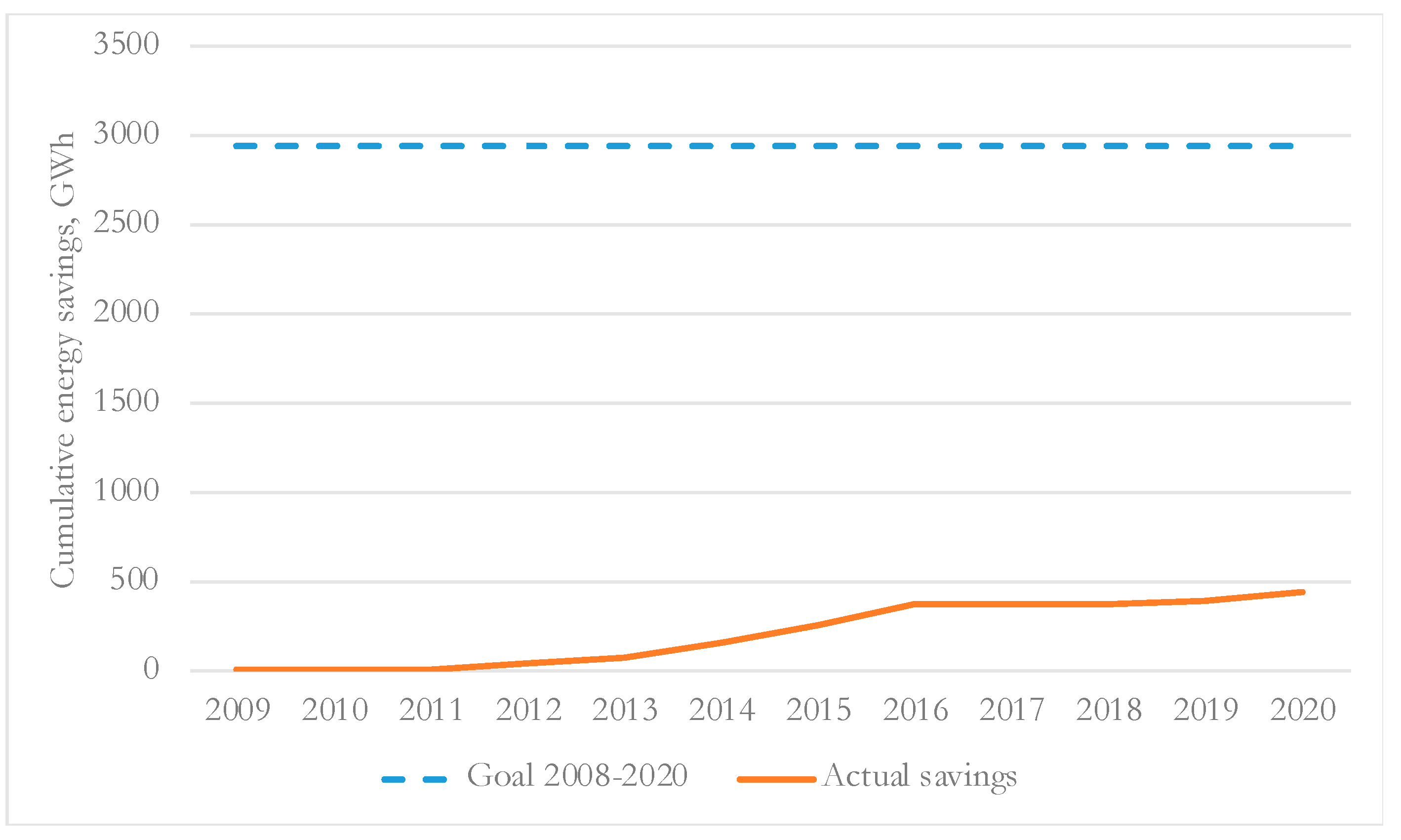

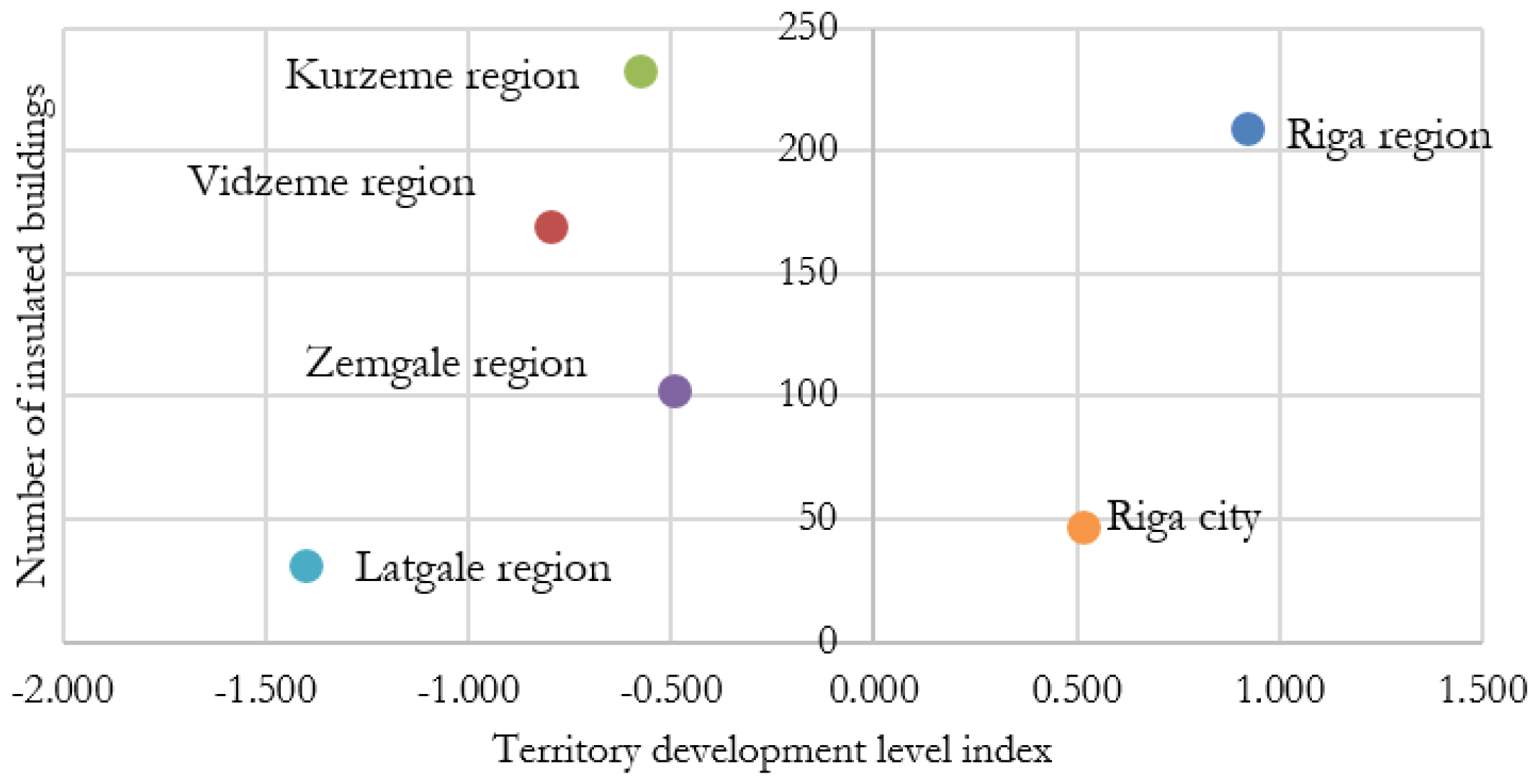

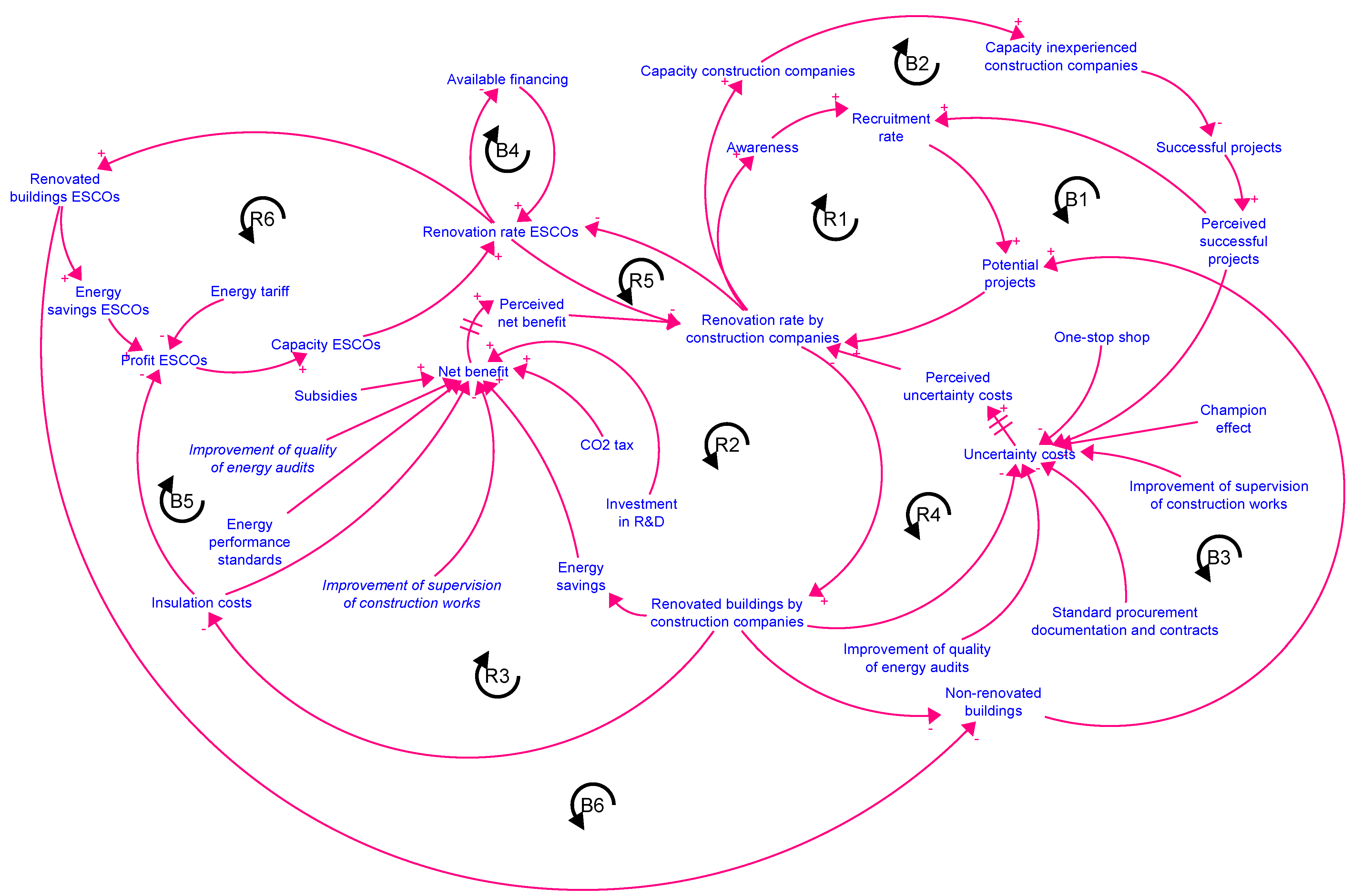

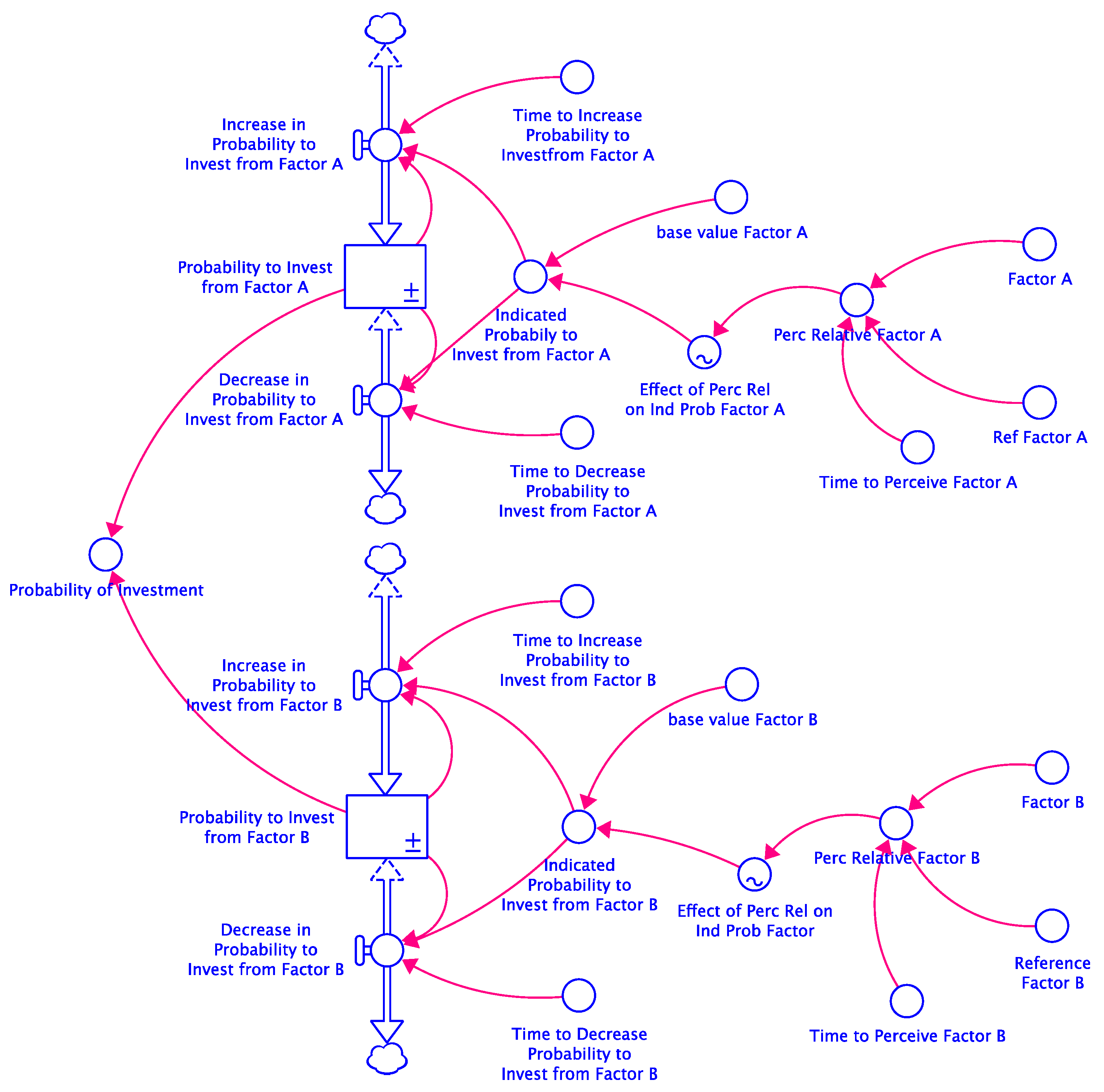
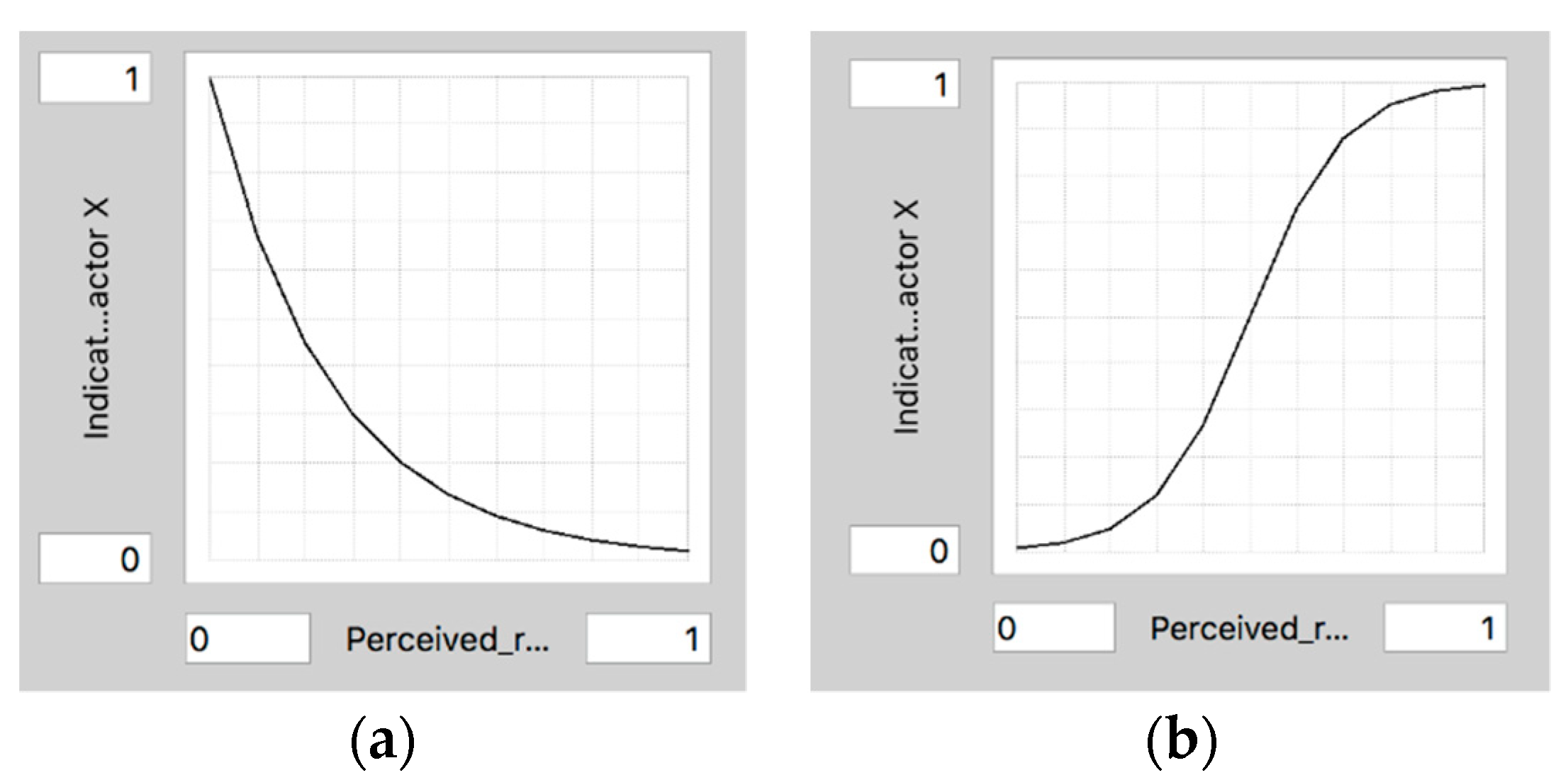
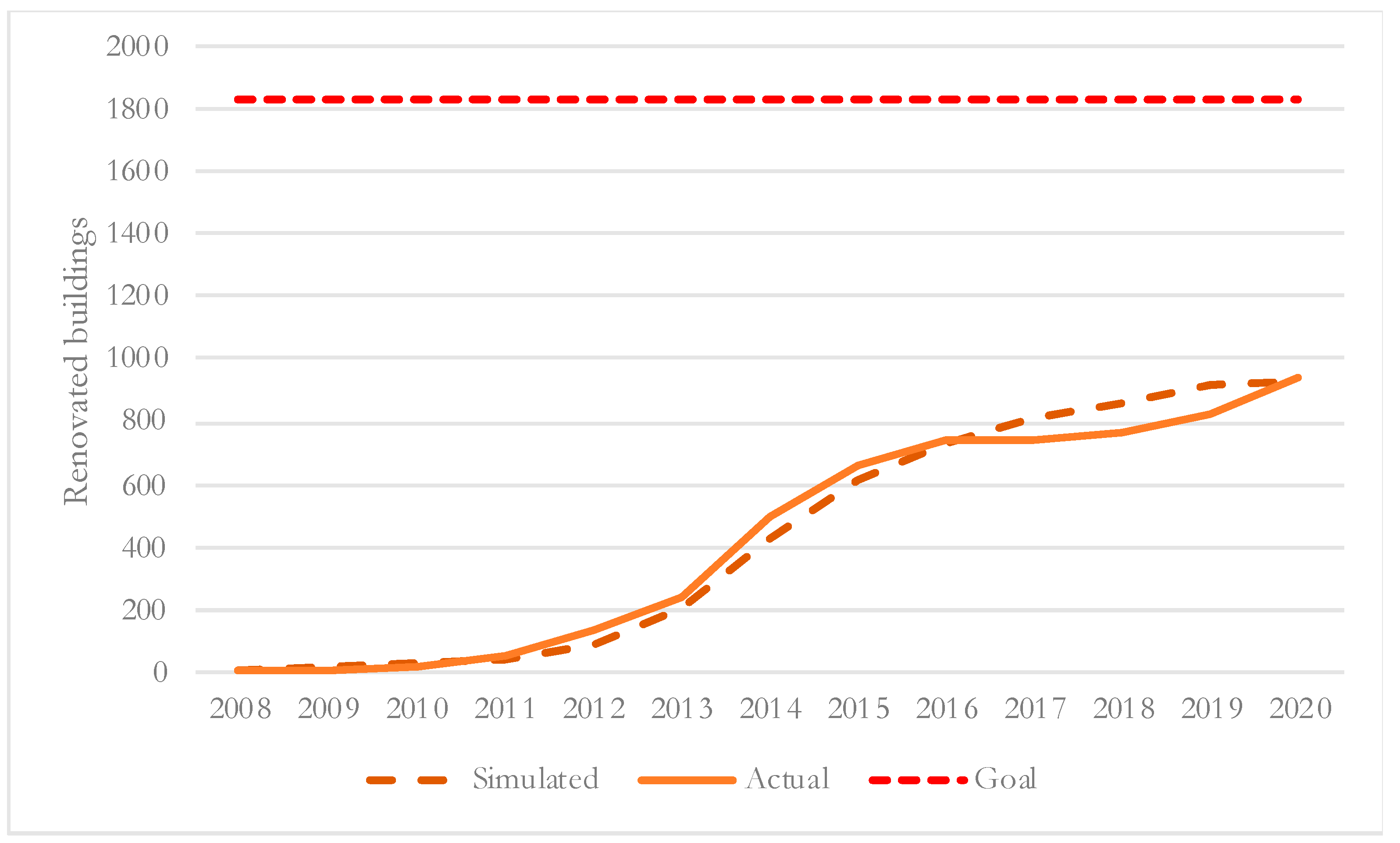
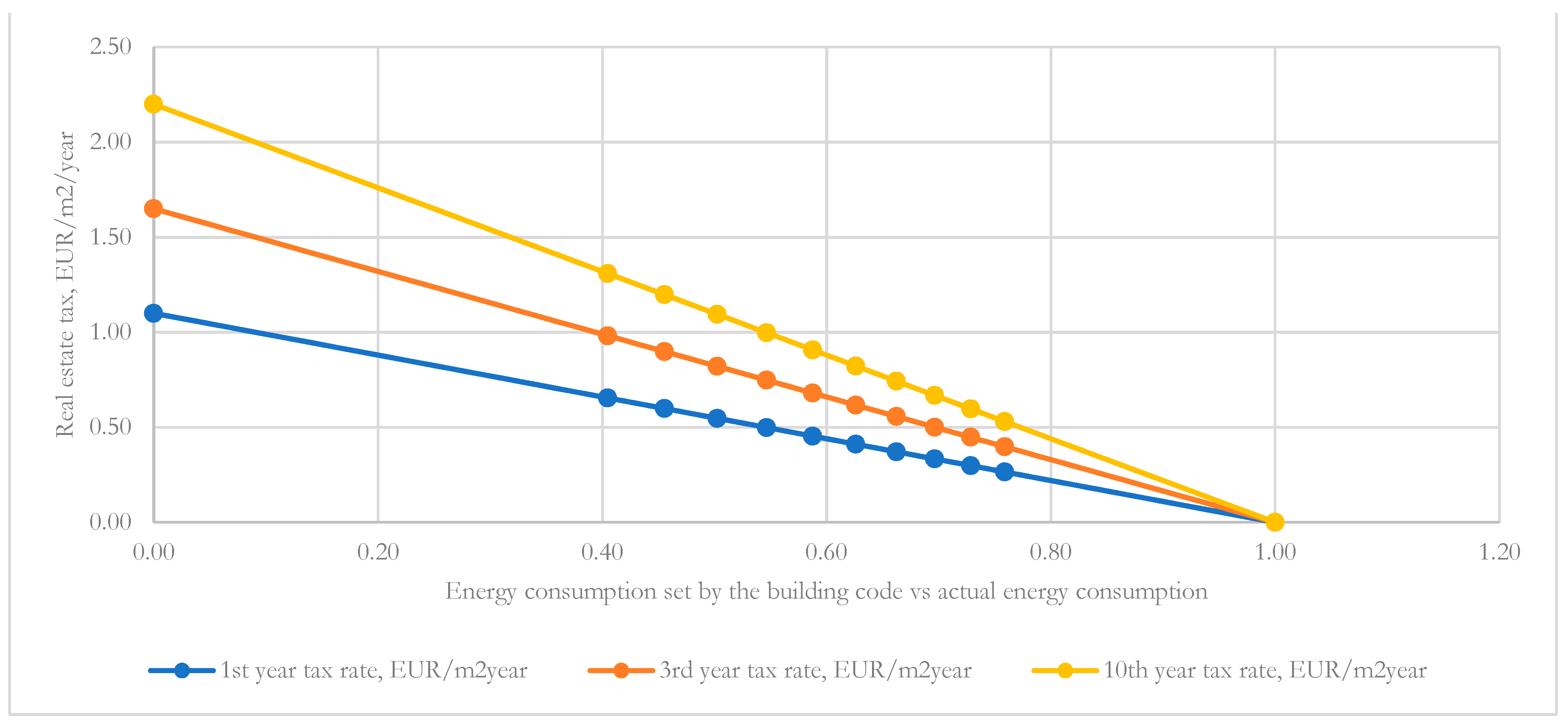
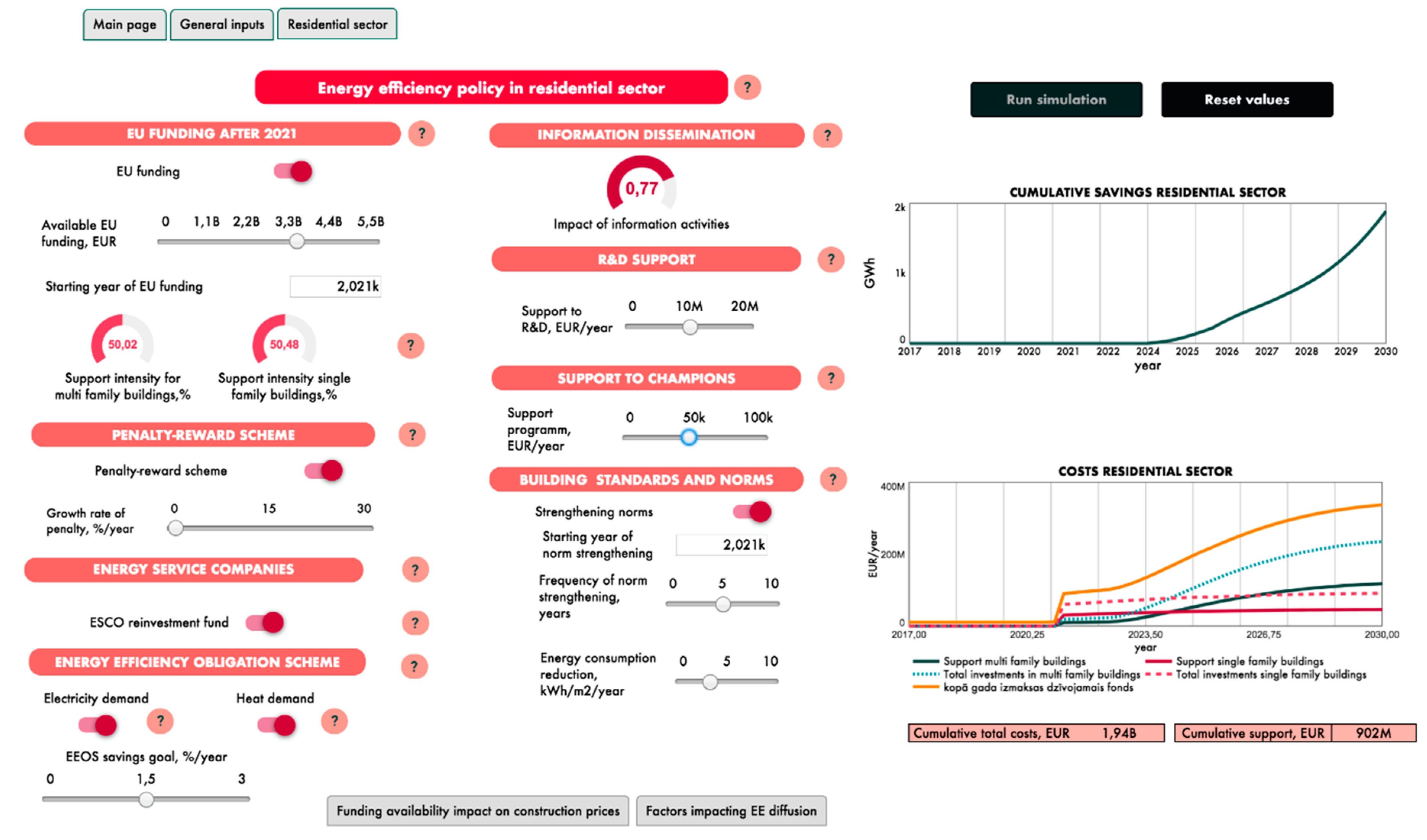
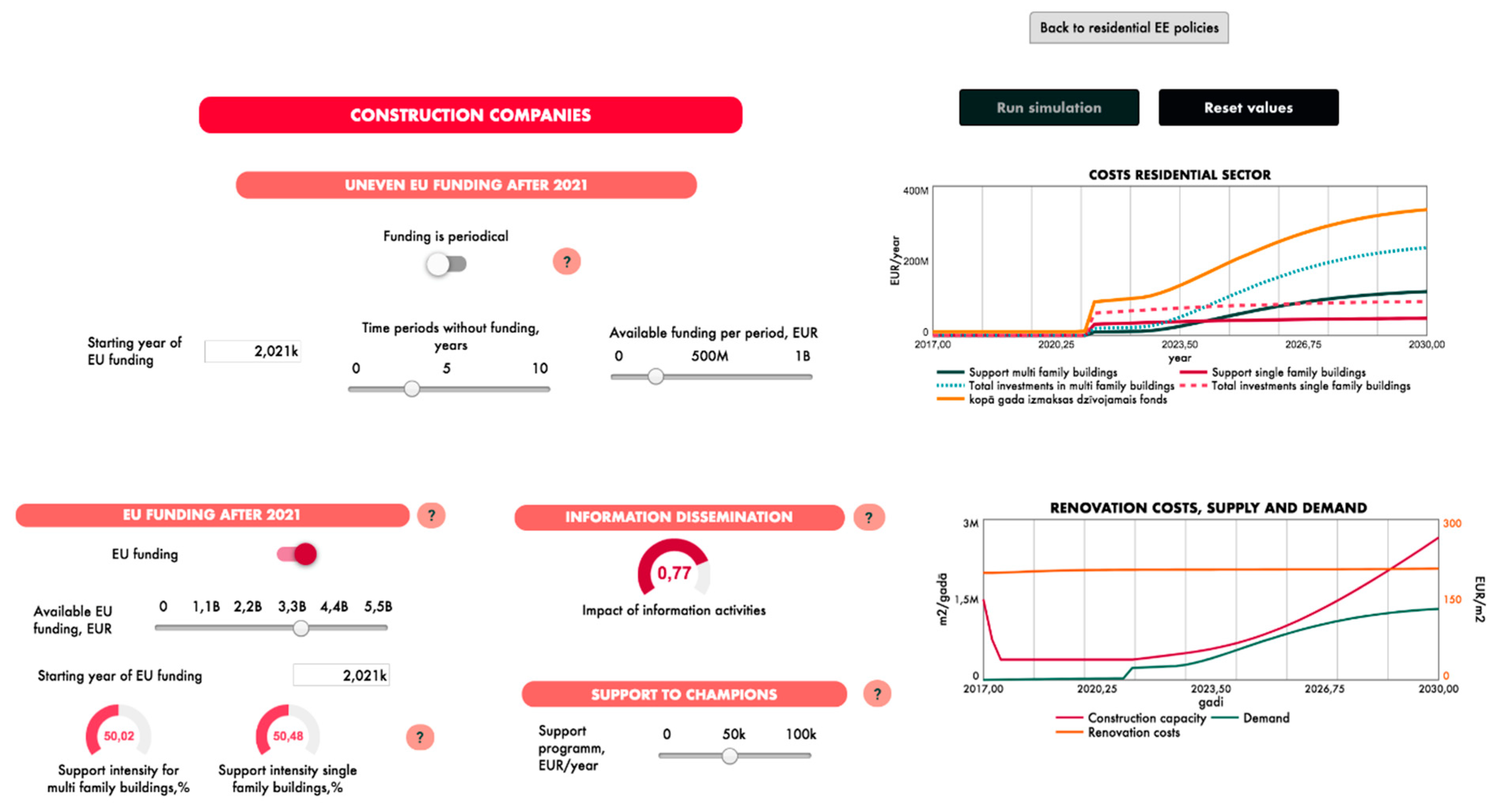
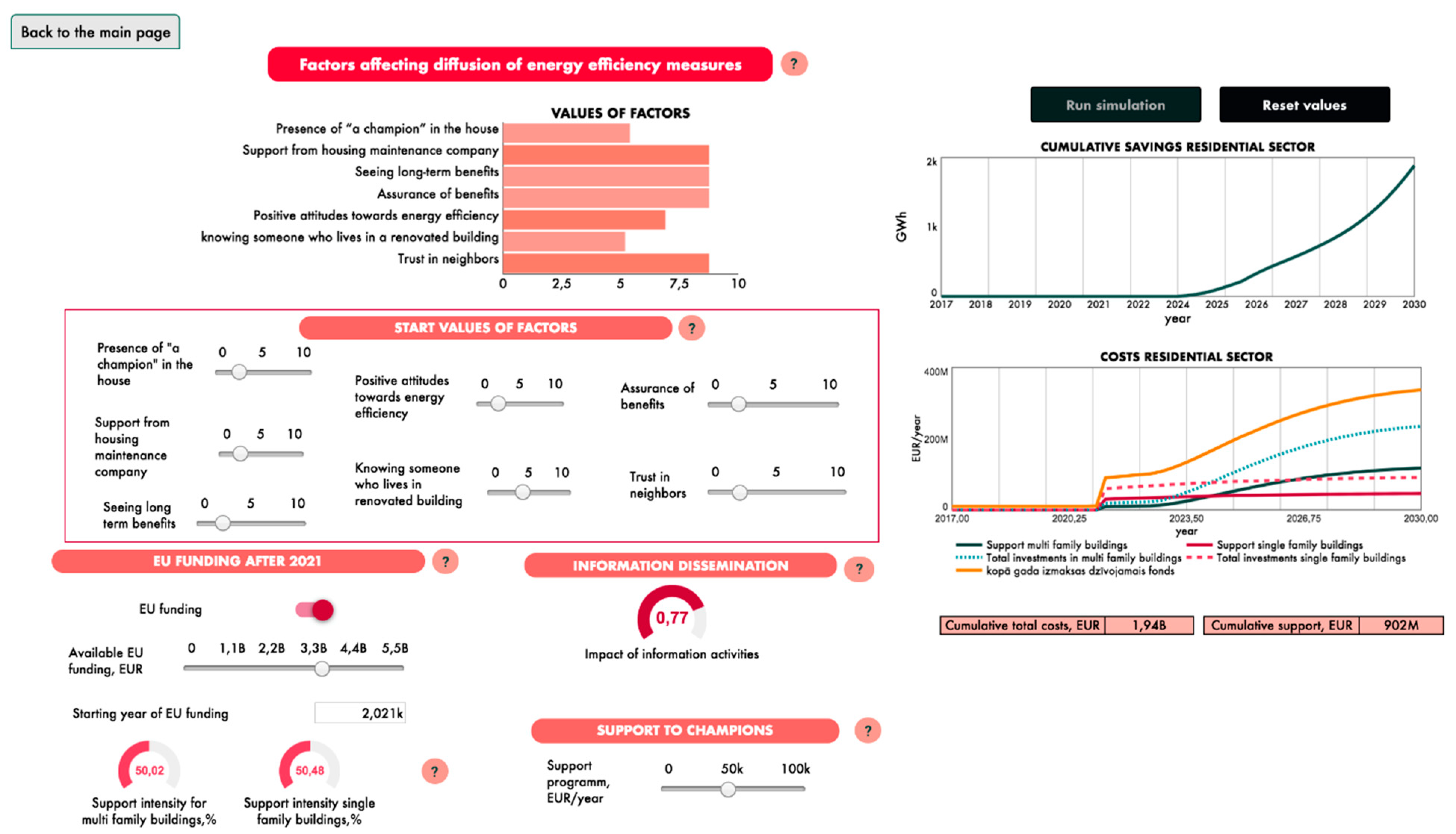
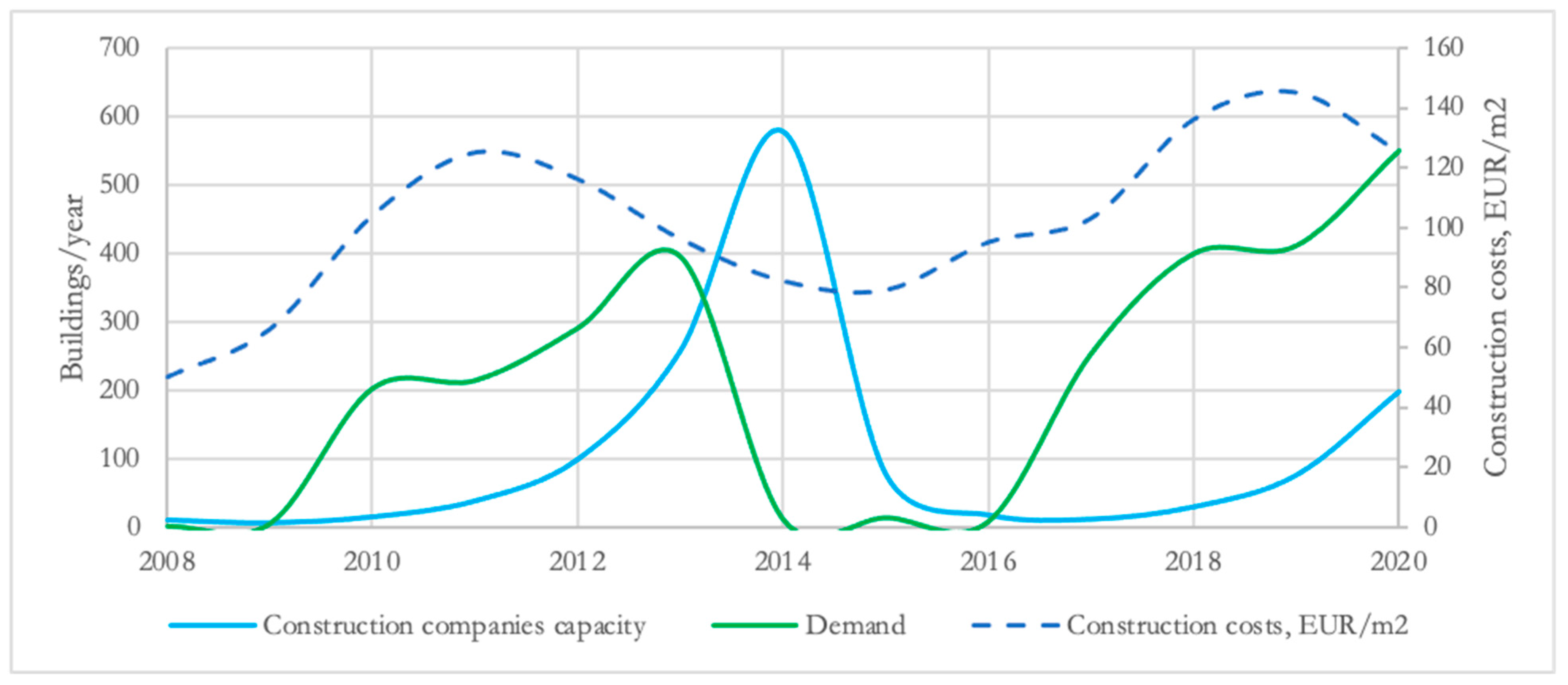
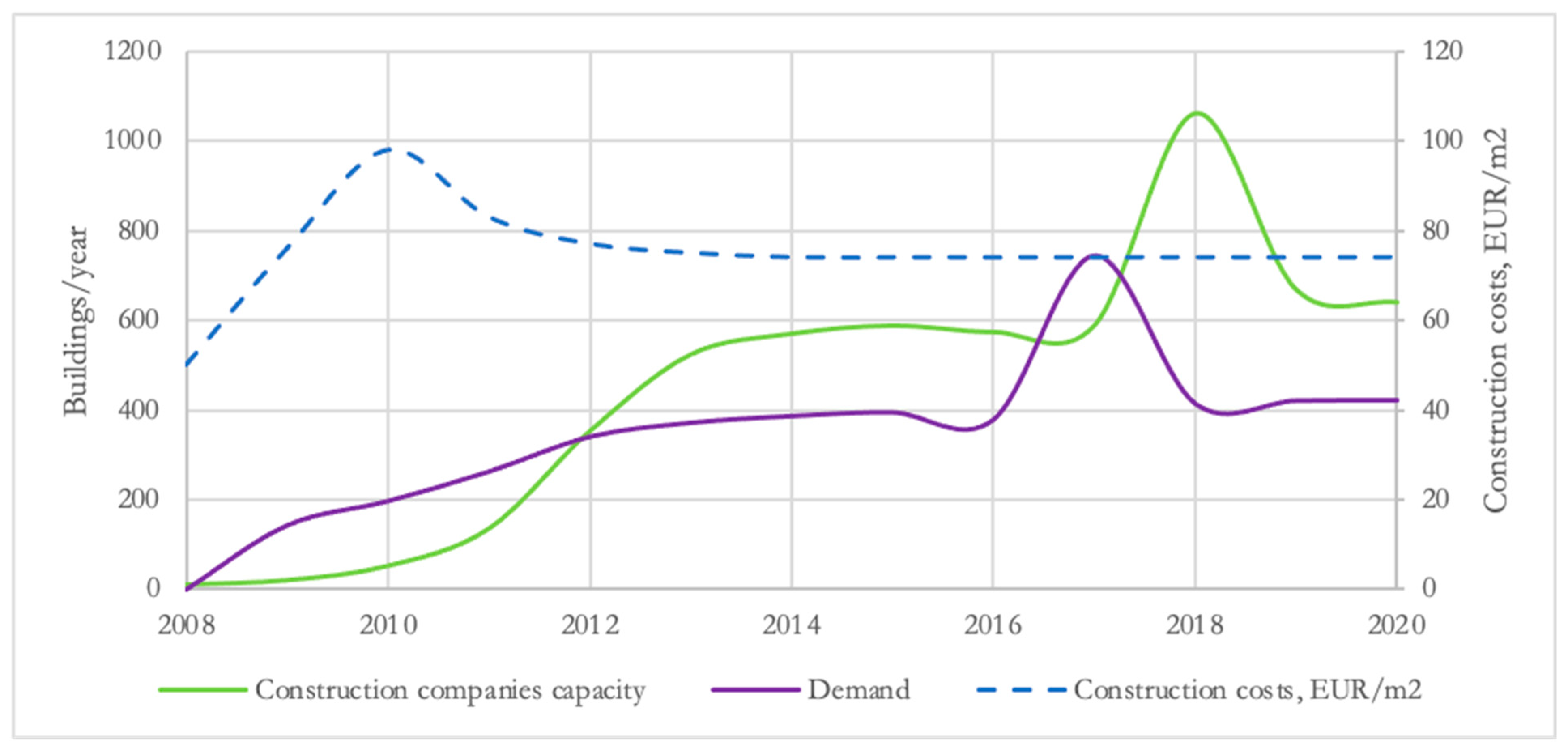

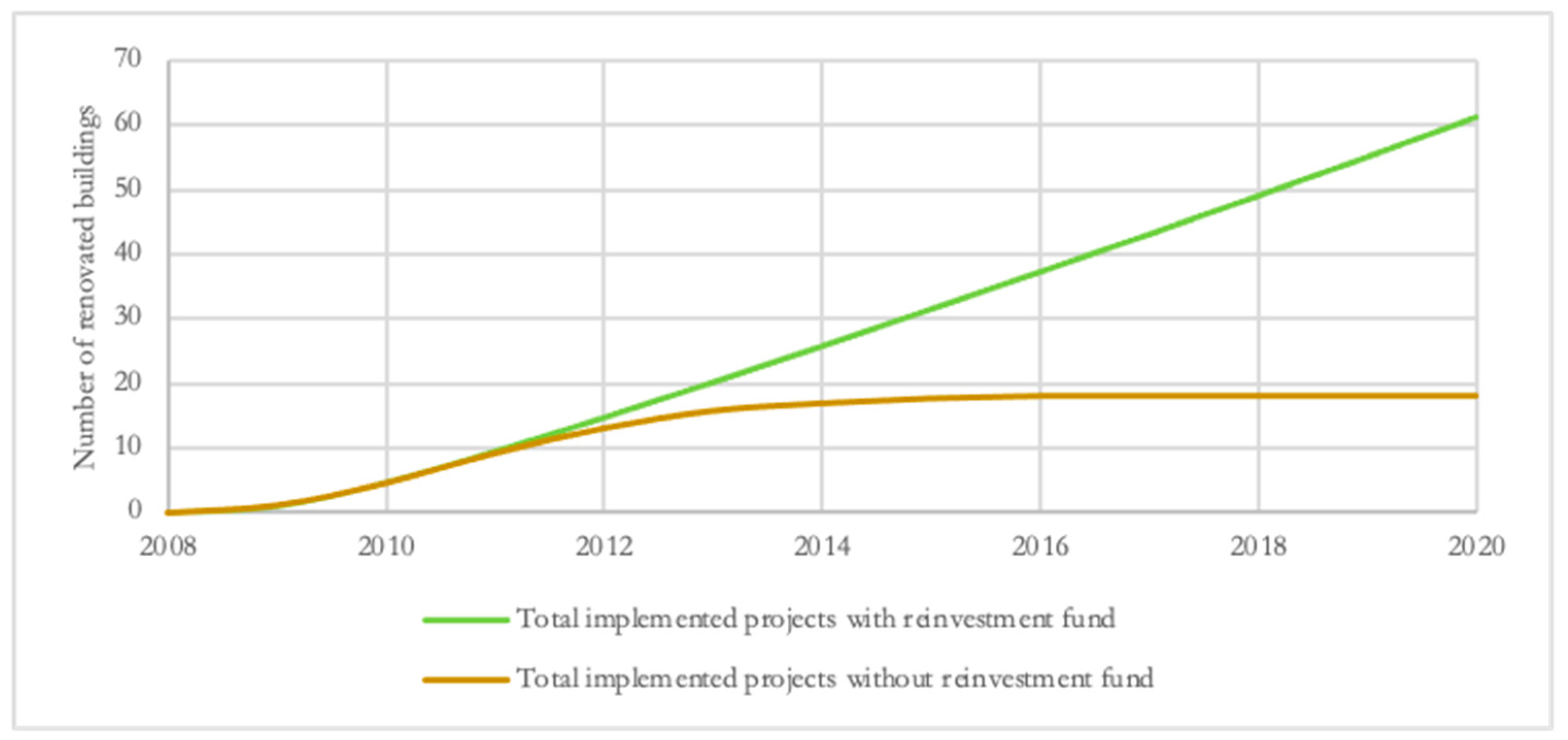

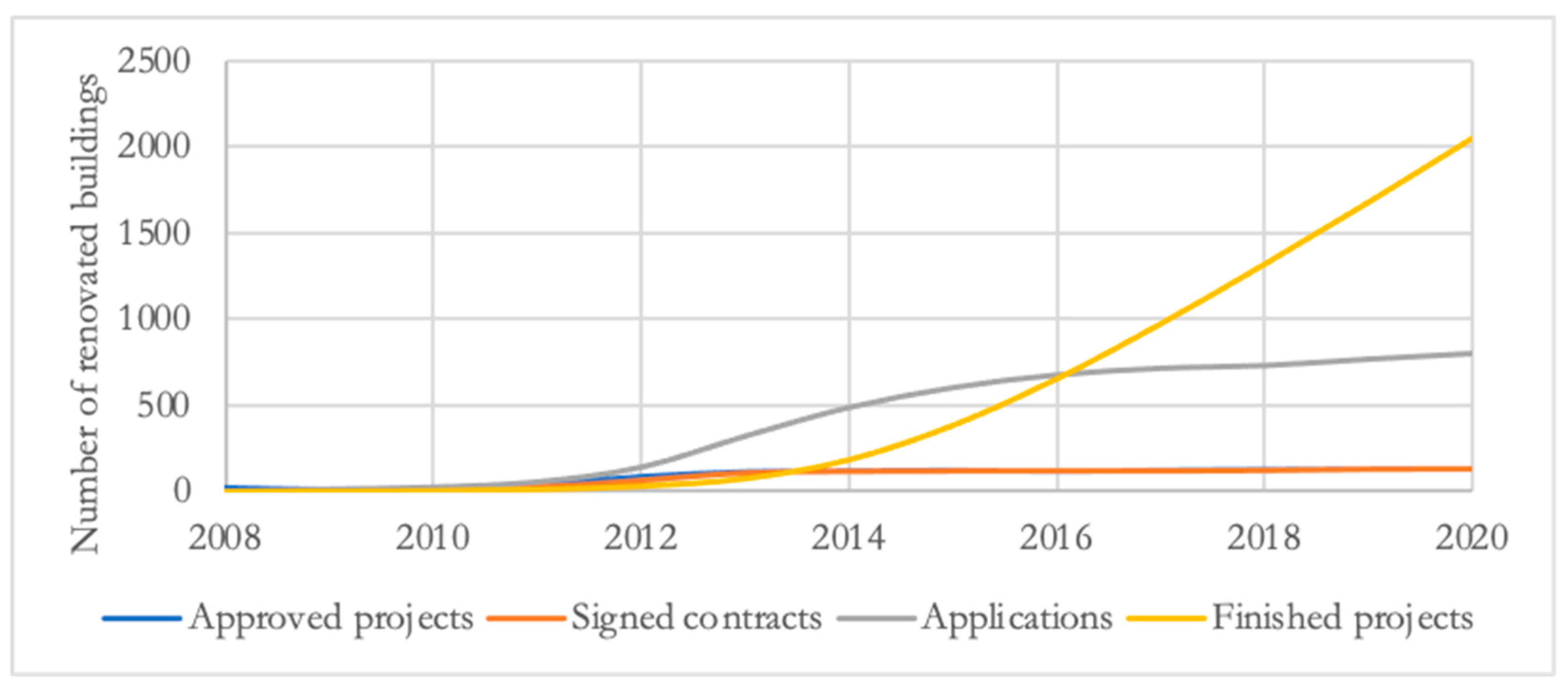
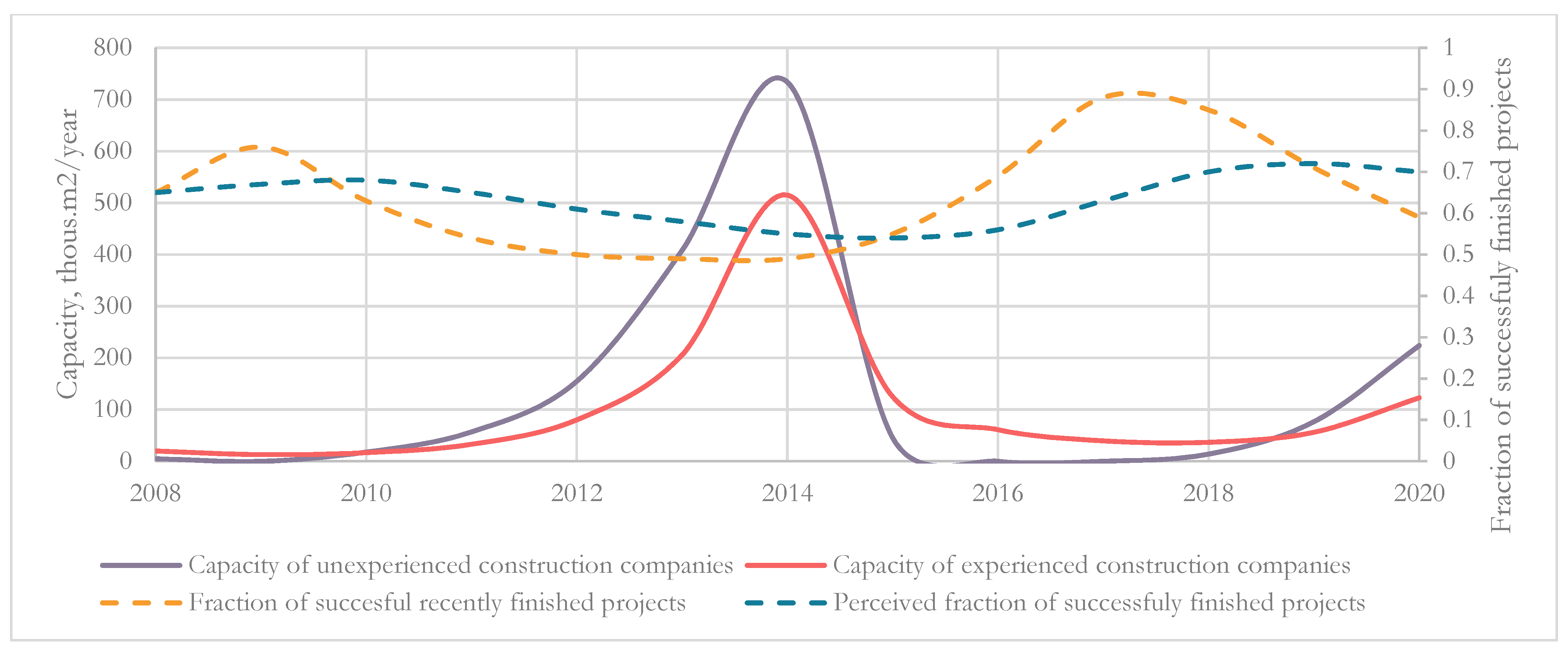


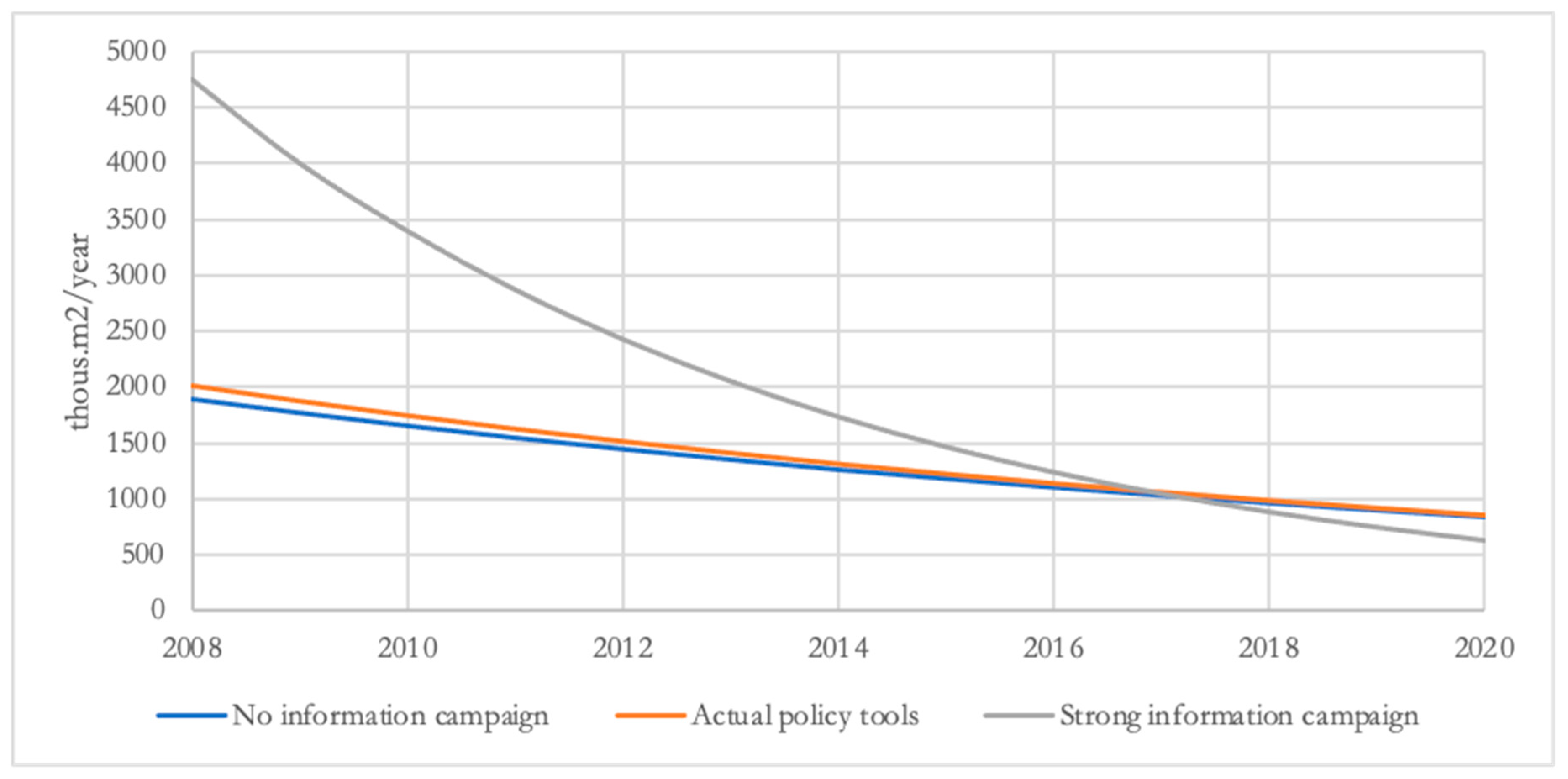
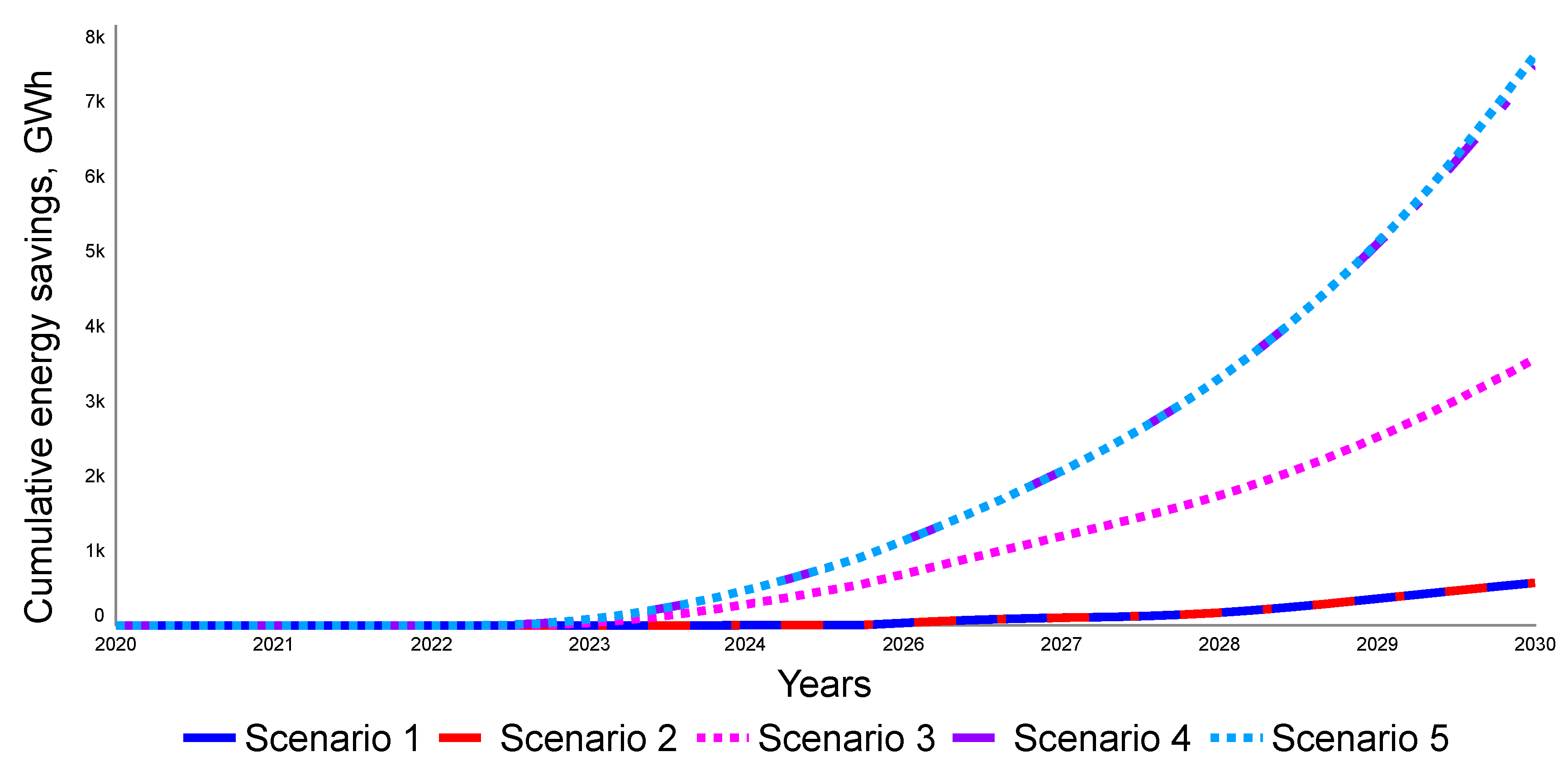
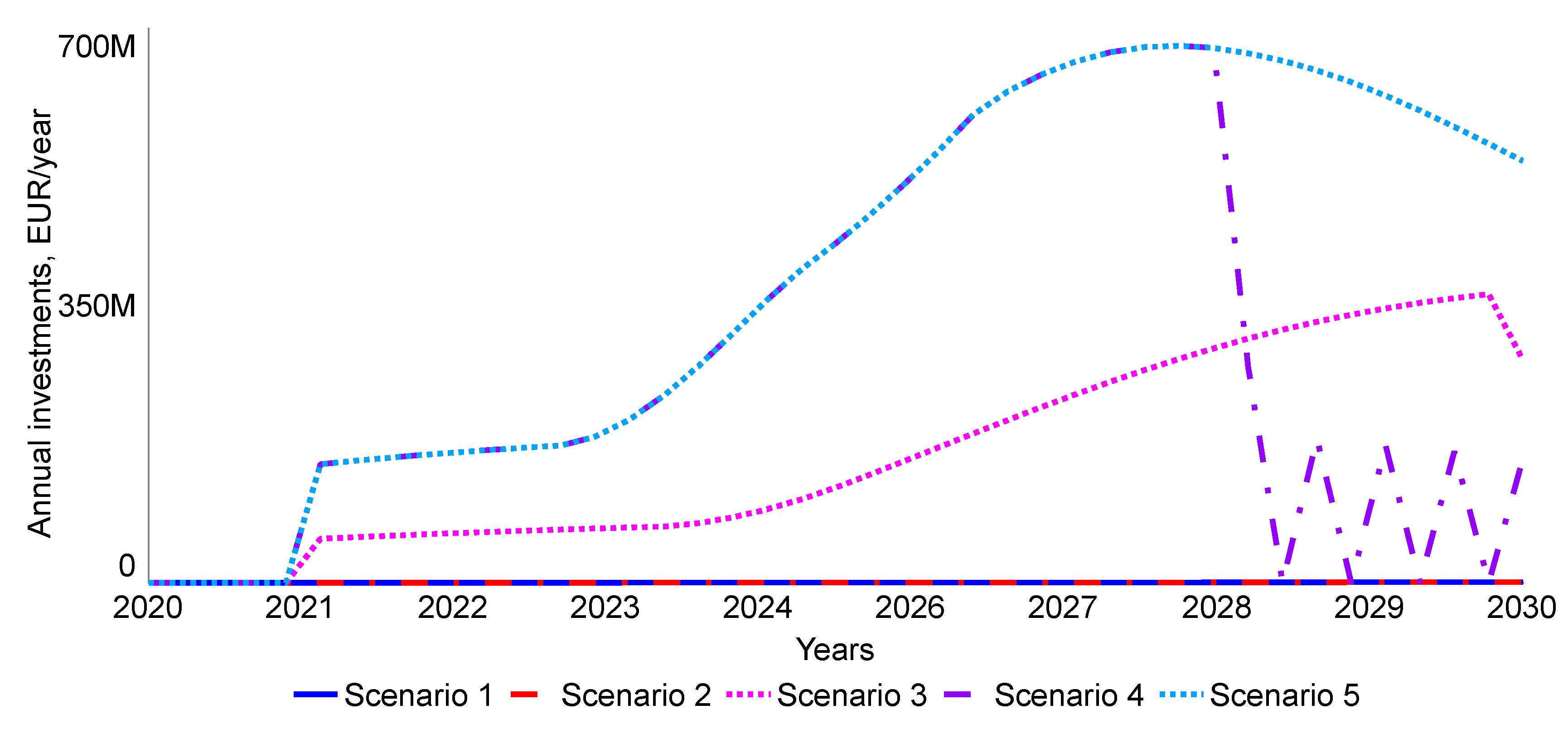
| Factor | Question, Text, or Statement | Beta Coefficient |
|---|---|---|
| 1 | The insulation of the building where my apartment is located would be useful to prevent the heat loss | 0.294596 |
| 2 | In general, people benefit when their houses are insulated | 0.289907 |
| 3 | The profession of the respondent: specialist, civil servant | 0.28926 |
| 4 | The housing management company of my building supports the insulation | 0.27466 |
| 5 | I expect that I will be able to live in my home long-term or sell it for a reasonable price, so I am ready to invest in it | 0.219648 |
| 6 | Among the inhabitants of my house, there is a trusted “champion” who could manage the insulation works (e.g., to take care of the paperwork, etc.) | 0.218237 |
| 7 | The majority of inhabitants of my building support the insulation | 0.198879 |
| 8 | The insulation must be organized by the housing management company of the building and paid for by the inhabitants | 0.175085 |
| 9 | I think that the apartment owners in my house would be capable of agreeing on a project such as insulation | 0.17447 |
| 10 | How much would you agree to pay per month during one year if somebody agreed to take over the responsibility for organizing the insulation? (average) | 0.1740372 |
| 11 | How much would you agree to pay per month during one year if somebody agreed to take over the responsibility for organizing the insulation? (maximum) | 0.1732232 |
| 12 | How much would you agree to pay per month along with your house caretaker bill? (maximum) | 0.1645948 |
| 13 | How much would you agree to pay per month along with your housing management company bill? (maximum) | 0.1633131 |
| Policy Tools | Scenario 1 | Scenario 2 | Scenario 3 | Scenario 4 | Scenario 5 |
|---|---|---|---|---|---|
| EU funding, million EUR | 200 | 600 | 200 | 600 | 1000 |
| EU funding support intensity, % | 30 | 30 | 30 | 30 | 30 |
| Start year of EU funding | 2022 | 2022 | 2022 | 2022 | 2022 |
| Penalty–reward scheme | Off | Off | On | On | On |
| ESCO reinvestment fund | Off | Off | On | On | On |
| EEOS electricity | On | On | On | On | On |
| EEOS heat | Off | Off | On | On | On |
| EEOS savings goal, %/year | 1.50 | 1.50 | 1.50 | 1.50 | 1.50 |
| Impact of information dissemination | 0.20 | 0.20 | 1 | 1 | 1 |
| R&D support, million EUR/year | Off | Off | 1 M | 10 M | 10 M |
| Support program for “champions”, thous. EUR/year | Off | Off | 0.3 M | 0.5 M | 0.5 M |
| Building standards and norms (starting year/strengthening frequency (years)/energy consumption reduction (kWh/m2/year)) | Off | Off | 5/3 | 5/10 | 5/10 |
Publisher’s Note: MDPI stays neutral with regard to jurisdictional claims in published maps and institutional affiliations. |
© 2021 by the authors. Licensee MDPI, Basel, Switzerland. This article is an open access article distributed under the terms and conditions of the Creative Commons Attribution (CC BY) license (https://creativecommons.org/licenses/by/4.0/).
Share and Cite
Blumberga, A.; Bazbauers, G.; Vancane, S.; Ijabs, I.; Nikisins, J.; Blumberga, D. Unintended Effects of Energy Efficiency Policy: Lessons Learned in the Residential Sector. Energies 2021, 14, 7792. https://doi.org/10.3390/en14227792
Blumberga A, Bazbauers G, Vancane S, Ijabs I, Nikisins J, Blumberga D. Unintended Effects of Energy Efficiency Policy: Lessons Learned in the Residential Sector. Energies. 2021; 14(22):7792. https://doi.org/10.3390/en14227792
Chicago/Turabian StyleBlumberga, Andra, Gatis Bazbauers, Selina Vancane, Ivars Ijabs, Jurijs Nikisins, and Dagnija Blumberga. 2021. "Unintended Effects of Energy Efficiency Policy: Lessons Learned in the Residential Sector" Energies 14, no. 22: 7792. https://doi.org/10.3390/en14227792
APA StyleBlumberga, A., Bazbauers, G., Vancane, S., Ijabs, I., Nikisins, J., & Blumberga, D. (2021). Unintended Effects of Energy Efficiency Policy: Lessons Learned in the Residential Sector. Energies, 14(22), 7792. https://doi.org/10.3390/en14227792






